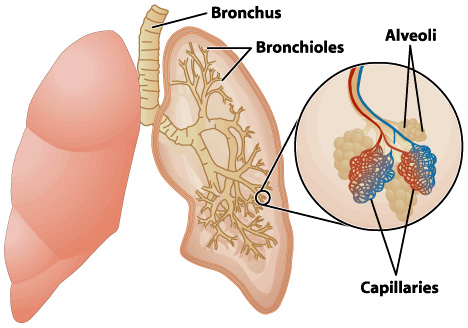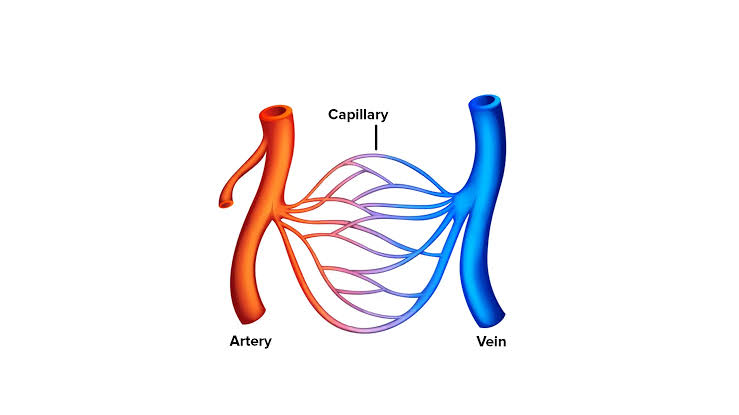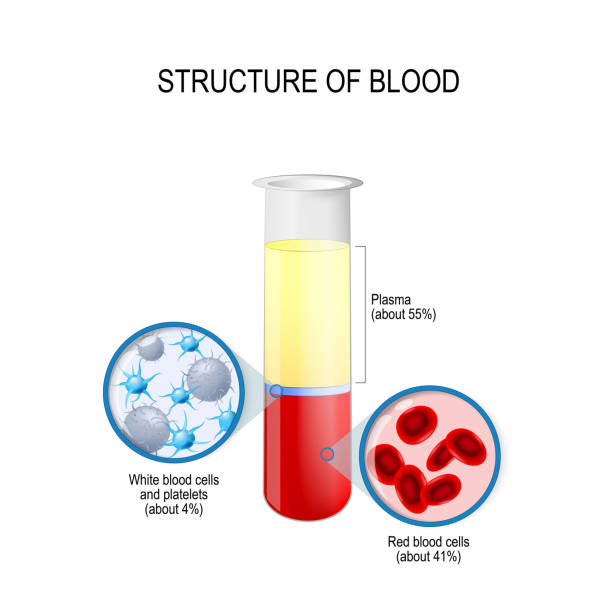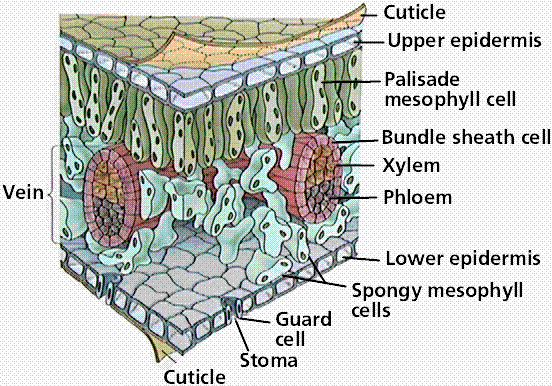Organisation
1.1 Principles of Organisation
Cells are the basic building blocks of all living organisms.
A tissue is a group of cells with a similar structure and function.
Organs are aggregations of tissues performing specific functions.
They are organised into organ systems, which work together to form organisms.
1.2 Animal Tissues, Organs and Organ Systems
1.2.1 The Human Digestive System
The digestive system involves several organs that work together to digest and absorb food.
It is made up of the following organs such as;
Glands (salivary glands and pancreas) – produce digestive juices that contain enzymes to break down food.
Stomach – provides the optimum pH for protease enzymes to work and produces hydrochloric acid to kill bacteria.
Small Intestine – an organ where soluble molecules are absorbed into the blood.
Liver – produces bile stored in the gallbladder that helps digestion of lipids.
Large Intestine – absorbs water from undigested food to produce faeces or waste, which passes out of the body through the rectum and anus.
Enzymes: A biological catalyst and is almost always a protein.
It speeds up the rate of a specific chemical reaction in the cell.
All living things have enzymes as our bodies naturally produce them.
They build some substances and break others down.
Has crucial roles in metabolism, facilitating processes such as digestion, respiration, and synthesis of biomolecules.
In metabolism, enzymes speed up chemical reactions by lowering the activation energy required for the reaction to occur. This enables metabolic reactions to proceed at a suitable rate under physiological conditions.
Nature of Enzymes
Enzymes are highly specific in their action, each catalyzing a particular reaction or set of reactions.
Specificity arises from their unique three-dimensional structures, particularly the active site where substrate binding and catalysis occur.
Enzymes undergo conformational changes upon substrate binding, leading to the formation of enzyme-substrate complexes and subsequent product formation.
Temperature
Enzyme activity is influenced by temperature due to its impact on molecular motion and enzyme stability.
At low temperatures, enzyme activity is generally low due to reduced molecular motion, limiting substrate-enzyme collisions.
At optimal temperature, enzymes exhibit maximum activity.
Beyond the optimal temperature, enzyme activity decreases due to denaturation, where the enzyme's structure becomes disrupted, leading to loss of activity.
Denaturation: a result of excessive thermal energy causing the disruption of weak bonds within the enzyme's structure.
pH Changes
Enzyme activity is influenced by pH, affecting the ionization state of amino acid residues in the enzyme's active site.
Each enzyme has an optimal pH range where it exhibits maximum activity.
Deviation from the optimal pH can lead to changes in enzyme structure, affecting substrate binding and catalysis.
Extreme pH values can cause denaturation of enzymes, resulting in loss of activity due to disruption of protein structure and loss of active site conformation.
Lock and Key Theory: is a model for enzyme-substrate interaction suggesting that the enzyme and the substrate possess specific complementary geometric shapes that fit exactly into one another.
Once bound, the reaction takes place and products are released from the enzyme’s surface.
The Main Digestive Enzymes
Digestive enzymes convert food into small soluble molecules that can be absorbed into the bloodstream.
Amylase, proteases, and lipases are three important digestive enzymes responsible for breaking down different macromolecules.
Amylase: digests starch into smaller molecules, ultimately yielding maltose, which in turn is cleaved into two glucose molecules by maltase.
Site of Production: Salivary Glands and Pancreas
Proteases: are enzymes that break down protein into amino acids.
Site of Production: Pancreas and Stomach
Lipases: break down fats into glycerol and fatty acids so they can be absorbed in the intestines.
Site of Production: Pancreas
The products of digestion are used to build new carbohydrates, lipids and proteins. Some glucose is used in respiration.
Bile: a fluid that is made and released by the liver and stored in the gallbladder.
It breaks down fats into fatty acids, which can be taken into the body by the digestive tract.
It is alkaline to neutralise hydrochloric acid from the stomach.
It also emulsifies fat to form small droplets which increases the surface area.
The alkaline conditions and large surface area increase the rate of fat breakdown by lipase.
1.2.2 The Heart and Blood Vessels
The Human Heart
The heart is an organ that pumps blood around the body in a double-circulatory system.
The right ventricle pumps blood to the lungs where gas exchange takes place.
The left ventricle pumps blood around the rest of the body.
The heart is divided into four chambers namely left and right atria (located on the top) and left and right ventricles (located at the bottom).

Structure and Function
Heart Chambers
Atria (Upper Chambers)
Left Atrium: It receives oxygenated blood from the lungs through the four pulmonary veins.
Right Atrium: It receives deoxygenated blood from the body through the superior and inferior vena cava.
The natural resting heart rate is controlled by a group of cells located in the right atrium that act as a pacemaker.
Artificial pacemakers are electrical devices used to correct irregularities in the heart rate.
Ventricles (Lower Chambers)
Left Ventricle: pumps oxygenated blood to the body through the aorta.
Right Ventricle: pumps deoxygenated blood to the lungs through the pulmonary arteries.
Heart Valves
Atrioventricular (AV) Valves
Tricuspid Valves: these are valves located between the right atrium and right ventricle.
Bicuspid or Mitral Valve: these are valves located between the left atrium and left ventricle.
Semilunar Valves
Pulmonary Valve: It guards the entrance to the pulmonary artery from the right ventricle.
Aortic Valve: It guards the entrance to the aorta from the left ventricle.
Blood Vessels (connected to the Heart)
Aorta: The largest artery that carries oxygenated blood from the left ventricle to the systemic circulation.
Pulmonary Artery: an artery that carries deoxygenated blood from the right ventricle to the lungs for oxygenation.
Superior and Inferior Vena Cava: these are veins that bring deoxygenated blood from the body to the right atrium.
Coronary Arteries and Veins
Coronary Arteries: supply the heart muscle (myocardium) with oxygen and nutrients.
Coronary Veins: It collects deoxygenated blood from the myocardium and return it to the right atrium.
The Structure of Lungs
Lungs are adapted for gas exchange because they contain tiny sacs called alveoli through which the gas exchange can take place.


Trachea: a stiff and flexible tube, reliable for carrying air in and out of your body.
Intercostal Muscles: these are muscles that pull down on the rib cage and thereby push air out of the lungs.
Ribs: they support and protect vital organs within the thoracic region, such as the heart and lungs, and contribute to the overall structural integrity of the chest.
Right and Left Bronchus: an extension of the trachea and serves as the central passageway into the lungs
Bronchioles: carry air to small sacs in your lungs called alveoli, where the exchange of oxygen and carbon dioxide takes place.
Air Sacs (Alveoli): exchange oxygen and carbon dioxide during the process of breathing in and breathing out.
Capillaries: are blood vessels in the walls of the alveoli. Blood gives off carbon dioxide through the capillary wall into the alveoli and takes up oxygen from the air in the alveoli.
Diaphragm: a muscle that helps you inhale and exhale (breathe in and out).
Types of Blood Vessels

Arteries: are blood vessels that bring oxygen-rich blood from your heart to all of your body's cells.
Capillary: are delicate blood vessels that transport blood, nutrients, and oxygen to cells in organs and body systems.
Veins: are blood vessels located throughout your body that collect oxygen-poor blood and return it to your heart.
Calculating Blood Flows
Pulse Rate
Measure pulse rate by counting the number of beats in a set time (30 seconds, or a minute).
In healthy people, generally, the lower the resting pulse rate, the fitter they are.
Pulse rates increase during and after exercise, as more oxygen must be provided to the muscles, and carbon dioxide removed.
Cardiac Output
It is the volume of blood pumped by the heart per minute.
Stroke volume: the volume of blood pumped out of the heart per beat.
Formula – heart rate in beats per minute × stroke volume in cm3 per beat = cardiac output in cm3 per minute
1.2.3 Blood

Blood: fluid that transports oxygen and nutrients to cells and carries away carbon dioxide and other waste products.
It is a tissue consisting of plasma, in which the red blood cells, white blood cells and platelets are suspended.
Main Components
Plasma: redistributes water to where your body needs it, delivers hormones, nutrients and proteins to parts of your body, and helps to exchange oxygen and carbon dioxide.
Red Blood Cells: carry oxygen from the lungs and deliver it throughout our body.
White Blood Cells: help the body fight infection and other diseases.
Platelets: prevent and stop bleeding.
1.2.4 Coronary Heart Disease: A non-communicable disease
Coronary Heart Disease: a type of heart disease where the arteries of the heart cannot deliver enough oxygen-rich blood to the heart.
In coronary heart disease, layers of fatty material build up inside the coronary arteries, narrowing them. This reduces the flow of blood through the coronary arteries, resulting in a lack of oxygen for the heart muscle.
Stents are used to keep the coronary arteries open.
Statins are widely used to reduce blood cholesterol levels which slows down the rate of fatty material deposits.
In some people, heart valves may become faulty, preventing the valve from opening fully, or the heart valve might develop a leak.
Faulty heart valves can lead to problems such as arrhythmia, infection, high blood pressure in the lungs, heart failure, or cardiac arrest.
On the other hand, faulty heart valves can be replaced using biological or mechanical valves.
In the case of heart failure, a donor's heart can be transplanted.
Artificial hearts are occasionally used to keep patients alive whilst waiting for a heart transplant or to allow the heart to rest as an aid to recovery.
Treatment | Advantages | Disadvantages |
|---|---|---|
Medicine (Drugs) |
|
|
Mechanical Device |
|
|
Transplant |
|
|
1.2.5 Health Issues
Health: the state of physical and mental well-being.
Disease: any harmful deviation from the normal structural or functional state of an organism, generally associated with certain signs and symptoms and differing in nature from physical injury.
Health and disease are influenced by a wide range of factors, including genetics, lifestyle, environment, socioeconomic status, access to healthcare, and social determinants of health.
These factors interact in complex ways to determine an individual's overall health status and susceptibility to various diseases.
Different Types Of Diseases
Communicable: illnesses that spread from one person to another, from an animal to a person, or from a surface or food
Examples – measles, tuberculosis, malaria, hepatitis, coronavirus, HIV/aids, etc.
Non-communicable: diseases are not spread through infection or other people, but are typically caused by unhealthy behaviours.
Examples – cancer, diabetes, heart disease, neurological disorders. Etc.
Different types of disease may interact:
Defects in the immune system mean that an individual is more likely to suffer from infectious diseases.
Viruses living in cells can be the trigger for cancers.
Immune reactions initially caused by a pathogen can trigger allergies such as skin rashes and asthma.
Severe physical ill health can lead to depression and other mental illnesses.
1.2.6 The effect of lifestyle on some non-communicable diseases
Risk factors are linked to an increased rate of disease. They can be:
Aspects of a person’s lifestyle
Substances in the person’s body or environment
A causal mechanism has been proven for some risk factors, but not in others. Also, many diseases are caused by the interaction of a number of factors.
The effects of diet, smoking and exercise on cardiovascular disease.
Obesity is a risk factor for Type 2 diabetes.
The effect of alcohol on the liver and brain function.
The effect of smoking on lung disease and lung cancer.
The effects of smoking and alcohol on unborn babies.
Carcinogens, including ionising radiation, as risk factors in cancer.
Human and Financial Cost of Non-Communicable Diseases on the Following Levels
Level | Human Costs | Financial Costs |
|---|---|---|
Individual | - NCD’s impact an individual's quality of life (leading to pain, disability, reduced mobility, and psychological distress). - Chronic conditions can impair daily functioning and independence. - Affects personal relationships, work, and overall well-being. | - Financial burdens due to healthcare expenses, (check-ups, medications, treatments, hospitalizations, and long-term care). - Productivity and income loss due to disability, absenteeism from work, or early retirement. |
Local Community | - NCDs reduce local community workforce, increasing dependency ratios, and placing caregiving burdens on family members and community support networks. - Loss of productive individuals due to premature mortality or disability affects the social fabric and cohesion of communities. | - Local communities bear the financial burden of providing healthcare services, infrastructure, and support systems to address the needs of individuals with NCDs. (includes funding for healthcare facilities, public health programs, community outreach initiatives, and social services to support individuals living with chronic condition) |
National | - NCDs cause challenges to healthcare systems, leading to increased demand for healthcare services, resources, and personnel. - Reduced life expectancy, lower quality of life, and disparities in health outcomes across different population groups within a nation. | - NCDs impose substantial economic costs on national economies due to healthcare expenditures, loss of productivity, and reduced economic growth potential. - Governments must allocate resources to prevent, diagnose, treat, and manage NCDs through healthcare infrastructure, research, education, and public health interventions. |
Global | - NCDs are a leading cause of mortality and morbidity worldwide, contributing to millions of premature deaths each year. - The global burden of NCDs disproportionately affects low- and middle-income countries, where healthcare resources are limited, and preventive measures may be inadequate. | - NCDs have profound economic implications at the global level, affecting global productivity, trade, and development. - The economic burden of NCDs includes healthcare expenditures, loss of workforce productivity, absenteeism, disability, and premature mortality, which can hinder socio-economic progress and exacerbate health inequities. |
Effect of Lifestyle Factors (diet, alcohol and smoking) on the Incidence of Non-Communicable Diseases
Factors | Local Level | National Level | Global Level |
|---|---|---|---|
Diet | - Poor dietary habits (consuming high amounts of processed foods, sugary beverages, and unhealthy fats) can contribute to the development of NCDs within local communities. - Lack of access to nutritious foods and reliance on convenience foods may worsen the problem. | - Dietary patterns influence the prevalence of NCDs at the national level. - Countries with diets high in processed foods, sodium, saturated fats, and added sugars tend to have higher rates of obesity, diabetes, cardiovascular disease, and certain cancers. | - Changes in dietary habits, including the adoption of Westernized diets high in processed foods and low in fruits, vegetables, and whole grains, have been associated with rising rates of NCDs worldwide. |
Alcohol | - Excessive alcohol consumption within local communities increases the risk of NCDs (liver disease, cardiovascular disease, certain cancers, and mental health disorders). - Alcohol-related accidents, injuries, and violence further compound the health and social consequences. | - Alcohol consumption patterns vary widely between countries and cultures, influencing the prevalence of alcohol-related NCDs at the national level. - Policies regulating alcohol availability, pricing, advertising, and drinking age impact consumption patterns and related health outcomes. | - Alcohol is a leading risk factor for NCDs globally, contributing to millions of deaths and disabilities each year. - Efforts to address alcohol-related harm require coordinated action at the global level, including policy interventions, public health campaigns, and regulatory measures. |
Smoking | - Tobacco use, including smoking cigarettes and other forms of tobacco consumption, is a major risk factor for NCDs at the local level. - Smoking contributes to the development of respiratory diseases, cardiovascular disease, cancer, and other health conditions within communities. | - National tobacco control policies, including taxation, advertising bans, smoke-free legislation, and cessation programs, influence smoking prevalence and related NCDs at the national level. - Countries with comprehensive tobacco control measures tend to have lower rates of smoking-related diseases. | - Tobacco use is a leading preventable cause of death globally, contributing to millions of premature deaths each year. - The implementation of the WHO Framework Convention on Tobacco Control and concerted efforts to reduce tobacco consumption have had positive impacts on global public health, but challenges remain, particularly in low- and middle-income countries where tobacco use is prevalent. |
1.2.7 Cancer
Cancer: the result of changes in cells that lead to uncontrolled growth and division.
General Types of Tumours
Benign Tumours (non-cancerous): are growths of abnormal cells which are contained in one area, usually within a membrane.
They do not invade other parts of the body.
Malignant Tumours (cancerous): cancerous and can spread cancer cells throughout one's body through the blood or lymphatic system.
They invade neighbouring tissues and spread to different parts of the body in the blood where they form secondary tumours.
Lifestyle Risk Factors that Develop Various Types of Cancer
Factors | Type of Cancer |
|---|---|
Alcohol Consumption |
|
Sun Exposure |
|
Diet and Nutrition |
|
Tobacco Use |
|
Obesity and Physical Inactivity |
|
Cancers that can be developed through Genetic Factors
Breast Cancer
Colorectal Cancer
Ovarian Cancer
Prostate Cancer
Melanoma
Pancreatic Cancer
Thyroid Cancer
1.3 Plant Tissues, Organs and Systems
1.3.1 Plant Tissues/

Structure and Function
Cuticle: the outermost layer interacting with the environment.
Epidermal tissues: a protective tissue that covers the entire surface of the plant.
Palisade mesophyll: is a layer where most of the photosynthesis occurs in the leaf.
Bundle Sheath Cell: a leaf cell type that forms a tightly packed layer surrounding the veins.
Spongy mesophyll: a complex, porous tissue found in plant leaves that enables carbon capture and provides mechanical stability.
Xylem: a vascular tissue that transports water throughout a plant's body.
Phloem: the vascular tissue in charge of transportation and distribution of organic nutrients.
Guard Cells: pairs of epidermal cells that control gas diffusion by regulating the opening and closure of stomatal pores.
Stomas: are pores on the surface of the aerial parts of most higher plants.
Meristem tissue: found at the growing tips of shoots and roots, are cells or groups of cells that can divide.
Leaf: a plant organ.
1.3.2 Plant Organ System
Structure and Function
Root Hair Cells: are adapted for the efficient uptake of water by osmosis, and mineral ions by active transport.
Have a large surface area (extended root hairs) that increases absorption.
Contains numerous mitochondria that release energy from glucose to provide the energy needed for active transport.
The large permanent vacuole impacts the movement speed of water from the soil to the cell.
Xylem Cells: transports water and mineral ions from the roots to the stems and leaves.
Consists of dead cells
The cells that make up the xylem are adapted to their function:
They lose their end walls, so the xylem forms a continuous, hollow tube.
They become strengthened by a substance called “lignin” which gives strength and support to the plant).
Transport in the xylem is a physical process and therefore does not require energy.
Phloem Cells: transports dissolved sugars from the leaves to the rest of the plant for immediate use or storage.
Moves food substances that the plant has produced by photosynthesis to where they are needed for processes such as:
growing parts of the plant for immediate use
storage organs such as bulbs and tubers
developing seeds
Factors that Affect the Rate of Transpiration
Change in Temperature |
|
|---|---|
Humidity |
|
Air Movement |
|
Light Intensity |
|
The roots, stem and leaves form a plant organ system for transport of substances around the plant.
Transpiration: the process of water movement through a plant and its evaporation from aerial parts, such as leaves, stems and flowers.
Process
Water Uptake: Plants absorb water from the soil through their roots. This water travels up through the plant's stem and into the leaves.
Evaporation: Once water reaches the leaves, it evaporates from the surface into the air. This happens through small openings called stomata, which act like tiny pores.
Water Vapor Release: As water evaporates from the leaf surface, it forms water vapour. This vapour exits the plant through the stomata and into the surrounding air.
Pulling Force: As water vapour escapes, it creates a kind of vacuum, or pull, within the plant. This pull helps draw more water up from the roots, continuing the process.
Cooling Effect: Transpiration also helps cool the plant down, much like sweating cools us down. As water evaporates, it takes heat energy from the leaf, which helps regulate the plant's temperature.
Measurement (Formula)
weight of H2O lost by transpiration (kg) ÷ weight of dry material produced = transpiration rate
Translocation: the movement of materials in plants from the leaves to other parts of the plant.
Process
Photosynthesis: In the leaves of plants, chlorophyll captures sunlight energy, which is used to convert carbon dioxide and water into glucose (sugar) and oxygen through the process of photosynthesis.
Sugar Production: Glucose, the product of photosynthesis, is produced in the leaf cells. This glucose serves as the primary source of energy for the plant.
Loading into Phloem: Once produced, glucose molecules are transported from the leaf cells into specialized tubes called phloem vessels.
Companion cells adjacent to the phloem actively pump sugars into the phloem sieve tubes.
Translocation: Sugars move through the phloem vessels from areas of high concentration (such as the leaves) to areas of low concentration (such as roots, stems, flowers, and fruits).
The movement of sugars in the phloem is powered by osmotic pressure gradients created by the accumulation of sugars in the sieve tubes.
Unloading: Once sugars reach their destination, they are unloaded from the phloem and can be used immediately for energy or stored for later use. In some cases, sugars are converted into starch for long-term storage.
Energy Use and Storage: Sugars transported through translocation are used by various parts of the plant for energy to support growth, reproduction, and other metabolic processes.
Excess sugars may also be stored in the form of starch in storage organs such as roots, tubers, or fruits, to be used during periods of low energy production or high demand.
Structure and Function of Stomata
It is a pore, found in the leaf and stem epidermis that is used for gas exchange.
The pore is bordered by a pair of specialised parenchyma cells known as guard cells which are responsible for regulating the size of the opening.
The role of stomata and guard cells is to control gas exchange and water loss.